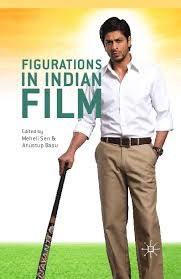Amid the vast spectrum of cinematic forms, Indian noir is something of an anomaly, blending colorful cultural patterns with raw urban bleakness. Stylized Indian noir, or Shadow and Spice as it is termed is a colourful sub-genre that merges the shadowy world of film noir and the paisley world of Indian storytelling. Featuring moody anti-heroes, murky, gray-eyed storylines and a visual style that is simply huge, its audience is growing fast among cinephiles and those who pass as critics of life simulated on the big screen.
This article delves into the stylized world of Indian noir, unpacking its origins, aesthetics, cultural significance, and the role of technology and data in its evolving narrative strategies.
What is Stylized Indian Noir?
A Genre Defined by Contrast
Stylized Indian noir is not merely a replication of classic Hollywood noir but a reinvention. It blends the psychological complexity of noir with Bollywood melodrama, infusing traditional noir tropes with Indian ethos, myth, and sociopolitical commentary.
Key Characteristics:
- Visual Aesthetics: High contrast lighting, deep shadows, and symbolic use of color.
- Themes: Corruption, betrayal, existential dread, and urban decay.
- Characters: Flawed protagonists, femme fatales, morally gray law enforcement.
- Sound and Music: A fusion of haunting classical scores and modern, sometimes electronic, sound design.
Historical Roots of Indian Noir
Post-Independence Influence
The seeds of Indian noir were sown in the decades following India’s independence. Films like Baazi (1951) and CID (1956) hinted at noir sensibilities, portraying underworlds and ethical dilemmas.
Global Influence Meets Local Flavor
While inspired by American noir, Indian noir evolved uniquely, reflecting the socio-economic anxieties of post-colonial India. Directors began to use noir techniques to critique power structures, caste dynamics, and urban alienation.
Visual Storytelling: The Language of Shadow and Spice
Cinematography
Cinematographers in Indian noir employ chiaroscuro lighting, moody palettes, and stylized framing to evoke tension and psychological depth. Films like Raman Raghav 2.0 and Manorama Six Feet Under are prime examples of this visual language.
Costumes and Set Design
The wardrobe often carries symbolic weight dark saris, trench coats, or blood-red shawls hint at character roles and foreshadow plot twists. Urban spaces are depicted as gritty and claustrophobic, enhancing the feeling of entrapment.
Use of Color
Unlike traditional noir’s monochrome style, Indian noir embraces saturated colors to evoke emotion. Red symbolizes danger or lust, green often reflects jealousy or corruption, and black underscores mystery.
Cultural Context: Noir Through an Indian Lens
Mythological and Religious Undertones
Indian noir frequently incorporates mythological allusions. Characters mirror figures from epics like the Mahabharata or Ramayana, reinterpreted in modern settings.
Urbanization and Alienation
The rapid urbanization of Indian cities becomes a backdrop for alienation, crime, and socio-political decay. Films like Satya (1998) explore how modernity disconnects individuals from traditional moral compasses.
Gender and Power
The femme fatale in Indian noir is often a woman navigating patriarchy through seduction, manipulation, or subversion. This adds a complex layer to gender politics in the genre.
Data, AI, and the Future of Indian Noir Storytelling
Predictive Storytelling
AI and data analytics are beginning to shape film development, from understanding audience preferences to optimizing scripts for emotional impact.
Smart Editing and Visual Effects
Automation and machine learning are now used to enhance post-production workflows, enabling quicker and more precise stylization. Filters mimicking noir aesthetics can be generated and refined using neural networks.
Audience Engagement
Streaming platforms like Netflix and Amazon Prime use data-driven insights to curate and promote stylized Indian noir content to global audiences.
Case Study: Netflix’s “Sacred Games”
A masterclass in stylized Indian noir, Sacred Games uses data-driven algorithms for content optimization while retaining deep cultural narratives and striking visuals.
Why Stylized Indian Noir Resonates Today
Reflecting Contemporary India
In an age of moral ambiguity, surveillance, and shifting identities, the stylized Indian noir speaks to a generation grappling with uncertainty and complexity.
Global Recognition
Indian noir is gaining international acclaim, with films being showcased at major film festivals and discussed in academic circles. This global recognition helps preserve and promote the genre’s unique voice.
A Platform for Dissent
Stylized Indian noir often becomes a canvas for socio-political critique, subtly challenging authoritarianism, gender roles, and class divides.
Stylized Indian noir, or “Shadow and Spice,” is not only a genre but also a cultural commentary, delivered in visual beauty and narrative coarseness. And as it grows, helped by technology and powered by a fresh generation of storytellers, it only becomes more relevant. Indian noir: From haunting hues to complex narratives, Indian noir is hooking the audiences, and how!
As India balances modernity and tradition, urban chaos and spiritual quests, this genre offers a mirror to its most pressing contradictions and a lens through which to explore them artistically.
Frequently Asked Questions (FAQ)
What makes Indian noir different from traditional noir?
Indian noir integrates classical noir elements with Indian cultural themes, mythologies, and melodrama, creating a unique hybrid genre.
Are there notable directors associated with Indian noir?
Yes. Directors like Anurag Kashyap (Raman Raghav 2.0, Ugly), Sriram Raghavan (Johnny Gaddaar, Andhadhun), and Navdeep Singh (Manorama Six Feet Under) are renowned for their contributions.
Is stylized Indian noir limited to films?
No. It extends to web series, short films, and even graphic novels, with platforms like Netflix and Amazon Prime offering rich, serialized noir content.
How does technology influence Indian noir today?
AI and data analytics help in audience profiling, script development, and post-production, allowing creators to fine-tune stories and visuals.
Where can I watch stylized Indian noir?
Platforms like Netflix, Hotstar, Zee5, and Amazon Prime Video offer a range of Indian noir films and series, often with subtitles for global audiences.